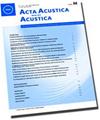利用边界层碰撞降低翼型后缘噪声
Q1 Arts and Humanities
引用次数: 11
摘要
本文提出了一种利用湍流边界层中的小凸起来降低翼型尾缘噪声的新思路。首先,我们开发并验证了一种新的计算方法来预测翼型后缘噪声,该方法使用稳态RANS CFD、经验壁面压力谱模型和Howe的衍射理论。这种数值方法能够快速准确地预测尾缘噪声,用于研究各种翼型几何形状和高雷诺数流动条件下的碰撞降噪。研究了三种类型的凸点,即吸力侧凸点、压力侧凸点和两侧凸点。结果表明,与清洁翼型相比,所有类型的凸起都能够降低远场噪声达10 dB,但其影响在有效频率范围方面有所不同。同时,对四种不同高度的凸点进行了比较,探讨了凸点高度对降噪的影响。结果表明,在靠近壁面的边界层内,碰撞引起速度亏缺。这种速度缺陷导致壁面附近的湍流动能降低,从而降低了尾缘噪声。综上所述,本文论证了边界层凹凸对后缘降噪的潜力,揭示了利用边界层凹凸降噪的物理机制。本文章由计算机程序翻译,如有差异,请以英文原文为准。
Airfoil Trailing Edge Noise Reduction Using a Boundary-Layer Bump
This paper presents a new idea of reducing airfoil trailing edge noise using a small bump in the turbulent boundary layer. First, we develop and validate a new computational approach to predict airfoil trailing edge noise using steady RANS CFD, an empirical wall pressure spectrum model,
and Howe's diff raction theory. This numerical approach enables fast and accurate predictions of trailing edge noise, which is used to study the noise reduction from the bump for various airfoil geometries and flow conditions at high Reynolds numbers. Three types of bumps, the suction-side
bump, pressure-side bump, and both-side bumps, are studied. The results show that all types of bumps are able to reduce far-field noise up to 10 dB compared to clean airfoils, but their impacts are diff erent in terms of the eff ective frequency range. Also, bumps with four diff erent heights
are compared with each other to investigate the eff ect of the height of bumps on noise reduction. It is demonstrated that a bump causes velocity deficit within the boundary layer near the wall. This velocity deficit results in reduced turbulence kinetic energy near the wall, which is responsible
for trailing edge noise reduction. Overall, this paper demonstrates the potential of a boundary-layer bump in trailing edge noise reduction and sheds light on the physical mechanism of noise reduction with boundary-layer bumps.
求助全文
通过发布文献求助,成功后即可免费获取论文全文。
去求助
来源期刊
CiteScore
2.60
自引率
0.00%
发文量
0
审稿时长
6.8 months
期刊介绍:
Cessation. Acta Acustica united with Acustica (Acta Acust united Ac), was published together with the European Acoustics Association (EAA). It was an international, peer-reviewed journal on acoustics. It published original articles on all subjects in the field of acoustics, such as
• General Linear Acoustics, • Nonlinear Acoustics, Macrosonics, • Aeroacoustics, • Atmospheric Sound, • Underwater Sound, • Ultrasonics, • Physical Acoustics, • Structural Acoustics, • Noise Control, • Active Control, • Environmental Noise, • Building Acoustics, • Room Acoustics, • Acoustic Materials and Metamaterials, • Audio Signal Processing and Transducers, • Computational and Numerical Acoustics, • Hearing, Audiology and Psychoacoustics, • Speech,
• Musical Acoustics, • Virtual Acoustics, • Auditory Quality of Systems, • Animal Bioacoustics, • History of Acoustics.

 求助内容:
求助内容: 应助结果提醒方式:
应助结果提醒方式:


